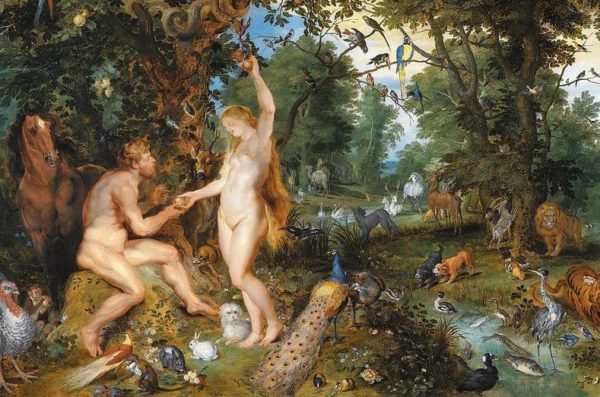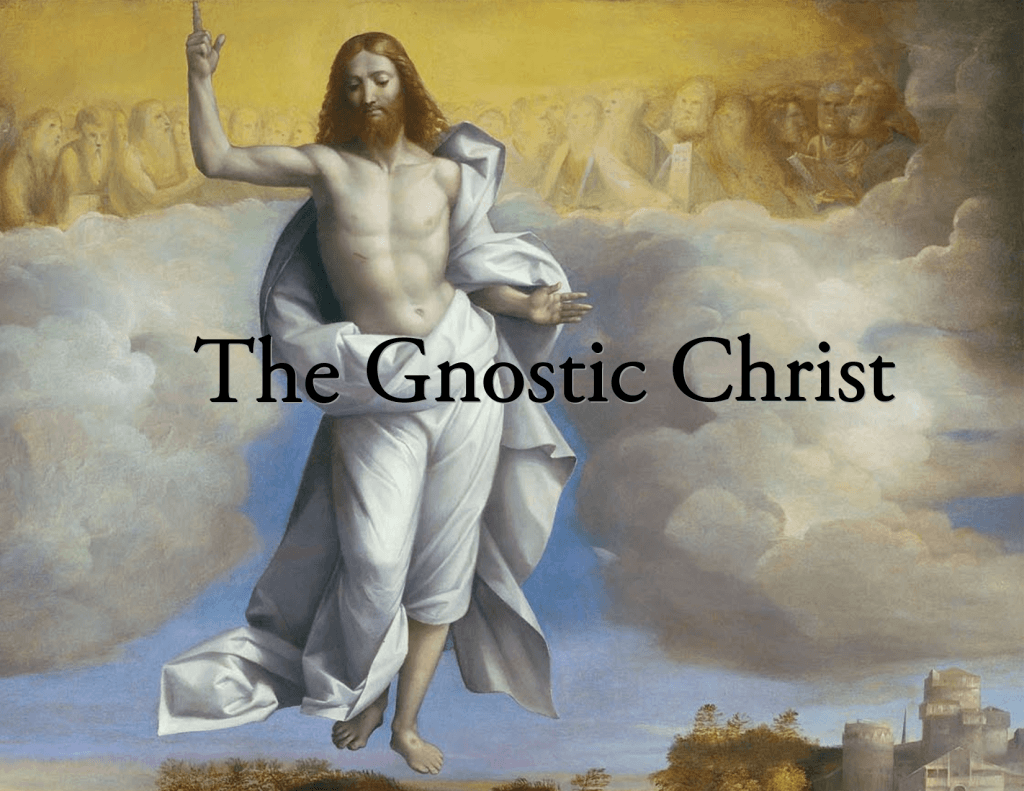Gnosticism is one of the most fascinating and perplexing phenomena in western theological history. At the heart was the Greek word gnosis meaning, “Knowledge or Direct knowledge of God”. Existing far before its Christian descendants, Gnosis in Classical Greek meant true knowledge or wisdom depending on which ancient  philosopher one reads. According to Plato, reality as perceived by the five senses is merely the surface of a highly complex and structured system. The act of seeing and recognizing this system Plato calls “ideas.” A key element in his philosophy, which would later transfer to Gnosticism and Gnostic, is the concept that every human had a previous and thorough understanding of the structures of reality. Unfortunately, this knowledge was somehow lost. The reclaiming of this knowledge through the comprehension of reality underlying structures is Gnosis.
philosopher one reads. According to Plato, reality as perceived by the five senses is merely the surface of a highly complex and structured system. The act of seeing and recognizing this system Plato calls “ideas.” A key element in his philosophy, which would later transfer to Gnosticism and Gnostic, is the concept that every human had a previous and thorough understanding of the structures of reality. Unfortunately, this knowledge was somehow lost. The reclaiming of this knowledge through the comprehension of reality underlying structures is Gnosis.
Gnosis in the first century was a quiet movement, adapting to the situations and locations of the societies it encountered. From early Christian literature, there is an impression that Gnosis was a threat to subvert Christianity, even though there seems to be no unified front of Gnosis during this time. The Gnostics were just a variety of independent, small sects that on the whole seem very different from each other. However, these different sects even debated the same metaphysical, cosmologic, soteriological, and ethical themes as their more mainstream Christian counterparts. Gnostics were the early movement of Christianity and lost the early  Christian struggle to define orthodoxy.
Christian struggle to define orthodoxy.
So who were the Gnostics? Irenaeus of Lyon, a bishop in the late 2nd century was an enemy of the Gnostics whom he called heretics. Irenaeus claimed that a single true Christianity originated with Jesus and the apostles. In his view other groups, such as the Gnostics, may claim to be Christians, but they were false deviations for the one true Christianity, and all competing Christians were heretics. Today we know Christianity was diverse from the very beginning. Even the original apostles did not agree on a single Christian message.
One of the most striking features of the Gnostic myth as Irenaeus tells it is that the God of Genesis is lower than the ultimate God and is arrogant, ignorant and evil. He is hostile to humans beings because humans beings have a share of the divine spirit that belongs to the higher God. The real name of the god who created this world is Ialdabaoth, a spiritual being who runs this universe like a tyrant.
This biblical father god of the Old Testament, also known as Yahweh or Jehovah, was hostile to human beings when he  commanded Adam and Eve not to eat from the tree of knowledge of good and evil, preventing them from knowing the spiritual truth.
commanded Adam and Eve not to eat from the tree of knowledge of good and evil, preventing them from knowing the spiritual truth.
When Adam and Eve eat from the tree, they gain gnosis, knowledge of the true God. Eve was encouraged to eat the fruit from a female deity known as Sophea, (Wisdom). As human beings continue to see true spiritual knowledge, Yahweh grows jealous of their devotion to the higher God and causes a flood to wipe out humanity. The higher God, Universal Intelligence, saves Noah and his family from the Yahweh evil plot.
Finally, human beings begin to lose the knowledge that Adam and Eve gain when they ate from the tree, but Universal Intelligence sends Jesus to restore this lost gnosis and rescue them from Yahweh and his fellow rulers. 
The Gnostic Version of the Garden of Eden is much like the Sumerian Tablets and the Law of One Yahweh is mentioned 19 times and agrees with much of what the Gnostics said about the God of the Old Testament.
Orthodox Christianity created the idea of heresy to condemn the Gnostics quest for higher knowledge because of the different belief system. Early Christians wanted a single harmonious system and considered themselves as a single body of Christ and did not want any division. Overtime, people who followed the Gnostics were considered godless and imperious members of a school of thought and therefore heretics. Some in the Christian religion still believe that today. The destruction of their sacred texts was inevitable, so some hid them in caves and various other places so they could not be found.
In 1945, one of the most important archaeological discoveries in the 20th century occurred. Thirteen ancient codices containing over 50 texts of Gnostic works were found in caves in Upper Egypt untouched by scribes. All of these can be found in the Nag Hammadi Library.
The discovery in 1945 provides a new and refreshing school of thought about spirituality and Jesus message. The discovery also came at a time when it could be shared with the world and not suppressed as it was for the last twenty centuries. Jesus is a teacher of wisdom and understanding, speaking in metaphors and parables of love and enlightenment. Much different from the sin and repentance as the Church teaches. Since the discovery and publications, the Gospel of Thomas has been the most celebrated of the 50 ancient texts discovered in 1945.
and Jesus message. The discovery also came at a time when it could be shared with the world and not suppressed as it was for the last twenty centuries. Jesus is a teacher of wisdom and understanding, speaking in metaphors and parables of love and enlightenment. Much different from the sin and repentance as the Church teaches. Since the discovery and publications, the Gospel of Thomas has been the most celebrated of the 50 ancient texts discovered in 1945.
Jesus said in saying 5 of the Gospel of Thomas, “Recognize what is in your sight, and that which is hidden from you will become plain to you . For there is nothing hidden which will not become manifest.” Have we come to a time when all the secrets of the world are manifesting? Gnosticism was not confined to the Christians but is part of the belief systems of Sufism and the Saints of India and other eastern mystics. Gnosticism is not only alive but reemerging in a world that needs much love and wisdom.

Wonderfully enlightening post!
at first, Thank you, my friend, for your excellent posts, I have unfortunately not much time to read them immediately but at last, not least I will read them all 😉
As I read this one, it comes into my head about Cathars and Catharism ( https://en.wikipedia.org/wiki/Catharism ) Or Mani the Prophet (the painter as the saga says in old Persians ( https://en.wikipedia.org/wiki/Mani_(prophet) )
h=have you heard about them? Thank you again and have a nice WE
Thank you for your kind comments. I have studied Manichaeism to some degree. It was founded by Mani, who was born in 216 and died in 274. Mani had a revelation when he was 12 years old. The angel called al-Twin appeared to him in behalf of God, the king of paradise of light. From that meeting Manichaeism was born. Mani mission was to bring the Gospel of Truth to all people, until he ran afoul of Zoroastrianism priests, tortured and imprisoned. He died at the age of 58.
The Cathars was a problem for the Catholic Church and believed much like the Gnostics, the Good God is the one of the old testament and the evil God of the Old Testament. For Cathars the Catholic Church represented a strand of Christianity that had gone badly astray in the fourth century. Cathars saw themselves as true Christians, retaining the Christian beliefs and practices of the Early Christian Church. All very interesting. Thank you again my friend for your kind words.
Likewise dear friend, and for your wonderful information, indeed it is exactly as you wrote. I’m Persian and read a lot about Zarathorstrian and Mani’s uprising. If he was successful it might be that the Arabs could never gain the Persian empire 😁 Thank you again, you are a very Wiseman 🙏👍🙏
Thank you dear friend. Now you have me interested in Catharism and the report where at least 7,000 innocent men, women and children were killed by Catholic Church.
Sadly true! A genocide indeed. 🙏❤